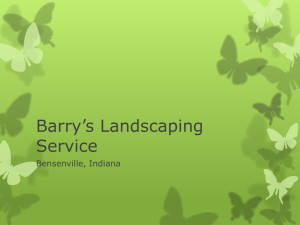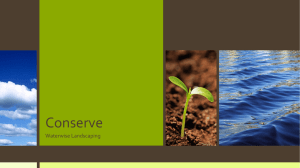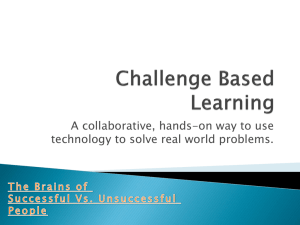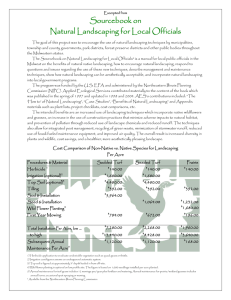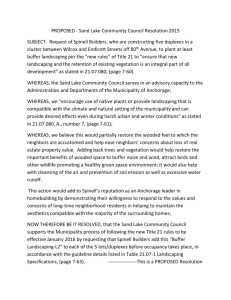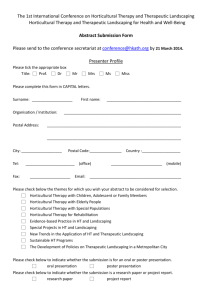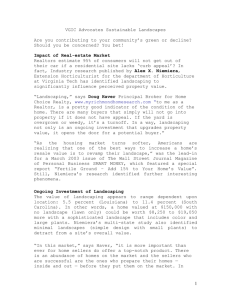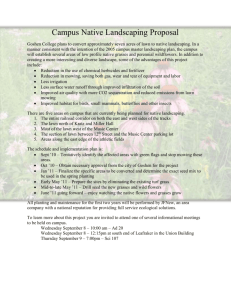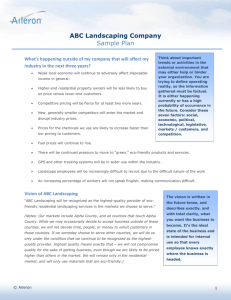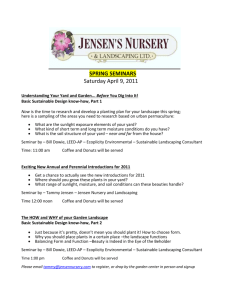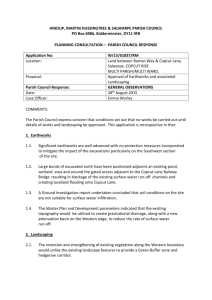File
advertisement
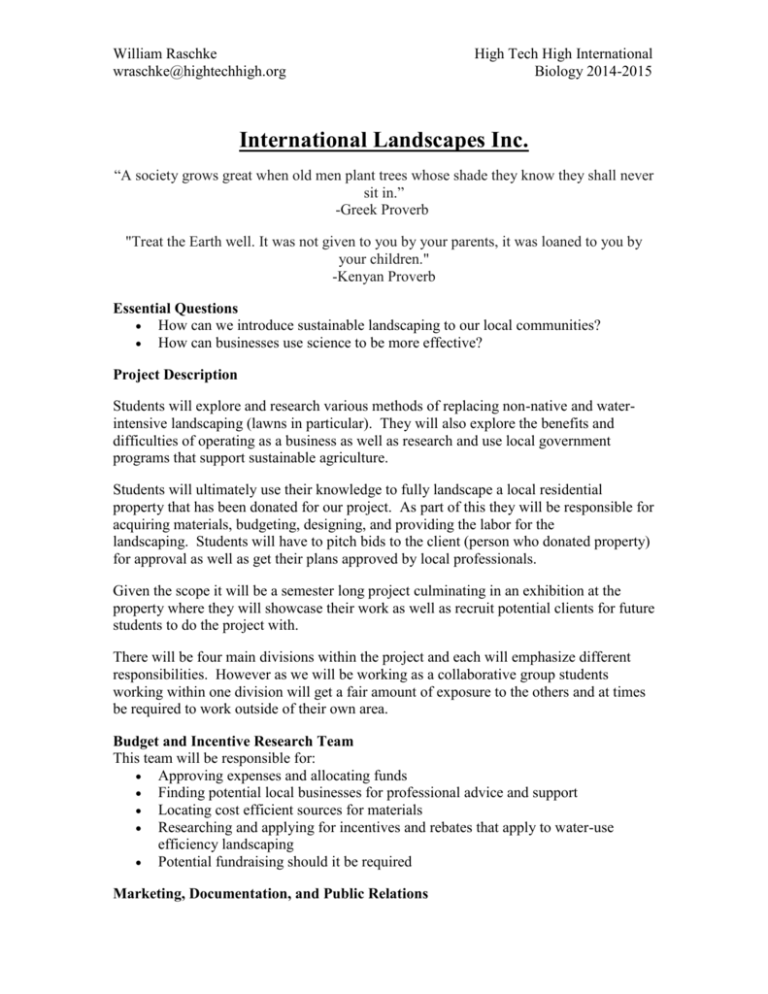
William Raschke wraschke@hightechhigh.org High Tech High International Biology 2014-2015 International Landscapes Inc. “A society grows great when old men plant trees whose shade they know they shall never sit in.” -Greek Proverb "Treat the Earth well. It was not given to you by your parents, it was loaned to you by your children." -Kenyan Proverb Essential Questions How can we introduce sustainable landscaping to our local communities? How can businesses use science to be more effective? Project Description Students will explore and research various methods of replacing non-native and waterintensive landscaping (lawns in particular). They will also explore the benefits and difficulties of operating as a business as well as research and use local government programs that support sustainable agriculture. Students will ultimately use their knowledge to fully landscape a local residential property that has been donated for our project. As part of this they will be responsible for acquiring materials, budgeting, designing, and providing the labor for the landscaping. Students will have to pitch bids to the client (person who donated property) for approval as well as get their plans approved by local professionals. Given the scope it will be a semester long project culminating in an exhibition at the property where they will showcase their work as well as recruit potential clients for future students to do the project with. There will be four main divisions within the project and each will emphasize different responsibilities. However as we will be working as a collaborative group students working within one division will get a fair amount of exposure to the others and at times be required to work outside of their own area. Budget and Incentive Research Team This team will be responsible for: Approving expenses and allocating funds Finding potential local businesses for professional advice and support Locating cost efficient sources for materials Researching and applying for incentives and rebates that apply to water-use efficiency landscaping Potential fundraising should it be required Marketing, Documentation, and Public Relations William Raschke wraschke@hightechhigh.org High Tech High International Biology 2014-2015 This team will be responsible for: Finalizing any proposals made to the client, will require extensive work with other teams Creating marketing material for acquiring future clients Documenting the project with videos and photography Reaching out to students, parents, and the community for professional advisors, future clients, and exhibition promotion Materials and Acquisitions This team will be responsible for: Researching sustainable materials to use for dryscaping and locating cost-efficient sources for acquiring them Growing, acquiring, and caretaking for native and drought-resistant plants Working with other teams to coordinate labor during on-site landscaping Creating list of necessary tools and acquiring them Livescape and Dryscape Design This team will be responsible for: Creating landscaping designs for both livescape and dryscape Researching ideal growing conditions for plants and locating them on the property appropriately Researching relationships between native and drought resistant plants and local animal species, and advising client on which plants will be best for their purposes and area Interacting with client and showing potential design ideas, getting feedback, and working features wanted by client into the design Developing a catalogue of products, design ideas, etc. for use with current and future clients Questions/Concerns/Ponderings Would like to include lessons involving the government side of environmental protection, including laws, subsidies, etc. and how they work Pulling in professionals from various aspects of this for continued feedback (similar to Dr. Don’s class previous semester) Timeline and conflict with other projects Budget concerns, how much cost can be pushed onto the client (for this project, and future ones) Go on a local tour to look at various landscaping, followed by students exploring landscaping in their own area and showing it to the class Tie in convergent evolution to native plants and other drought resistant plants More tie ins for plant evolution, cost benefit analysis of adaptations required for dry climates Consumer potluck, having students bring in food and speak to the origins of the plants ethnobotany lab, kirby-bauer method William Raschke wraschke@hightechhigh.org High Tech High International Biology 2014-2015
